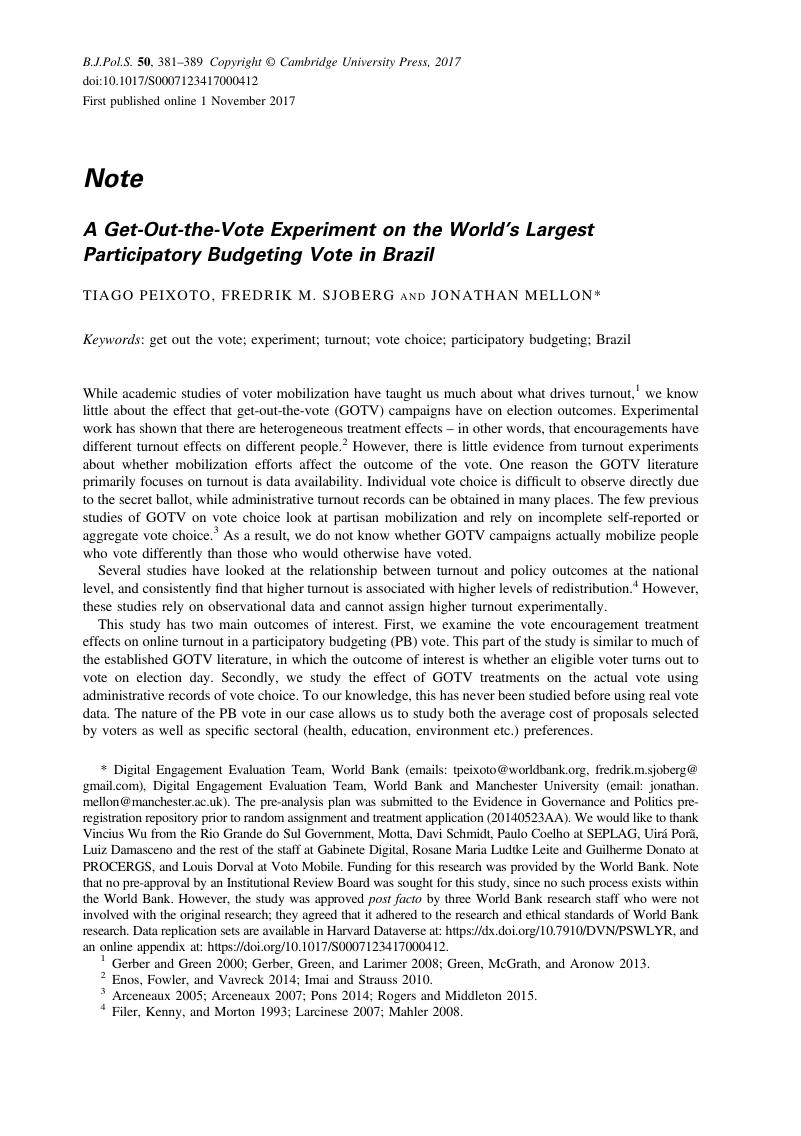Article contents
A Get-Out-the-Vote Experiment on the World’s Largest Participatory Budgeting Vote in Brazil
Published online by Cambridge University Press: 01 November 2017
Abstract

- Type
- Note
- Information
- Copyright
- © Cambridge University Press 2017
Footnotes
Digital Engagement Evaluation Team, World Bank (emails: tpeixoto@worldbank.org, fredrik.m.sjoberg@gmail.com), Digital Engagement Evaluation Team, World Bank and Manchester University (email: jonathan.mellon@manchester.ac.uk). The pre-analysis plan was submitted to the Evidence in Governance and Politics pre-registration repository prior to random assignment and treatment application (20140523AA). We would like to thank Vincius Wu from the Rio Grande do Sul Government, Motta, Davi Schmidt, Paulo Coelho at SEPLAG, Uirá Porã, Luiz Damasceno and the rest of the staff at Gabinete Digital, Rosane Maria Ludtke Leite and Guilherme Donato at PROCERGS, and Louis Dorval at Voto Mobile. Funding for this research was provided by the World Bank. Note that no pre-approval by an Institutional Review Board was sought for this study, since no such process exists within the World Bank. However, the study was approved post facto by three World Bank research staff who were not involved with the original research; they agreed that it adhered to the research and ethical standards of World Bank research. Data replication sets are available in Harvard Dataverse at: https://dx.doi.org/10.7910/DVN/PSWLYR, and an online appendix at: https://doi.org/10.1017/S0007123417000412.
References
- 3
- Cited by




